KARAMOJA RESILIENCE SUPPORT UNIT: Turning Evidence Into Action
Other Reports and Information
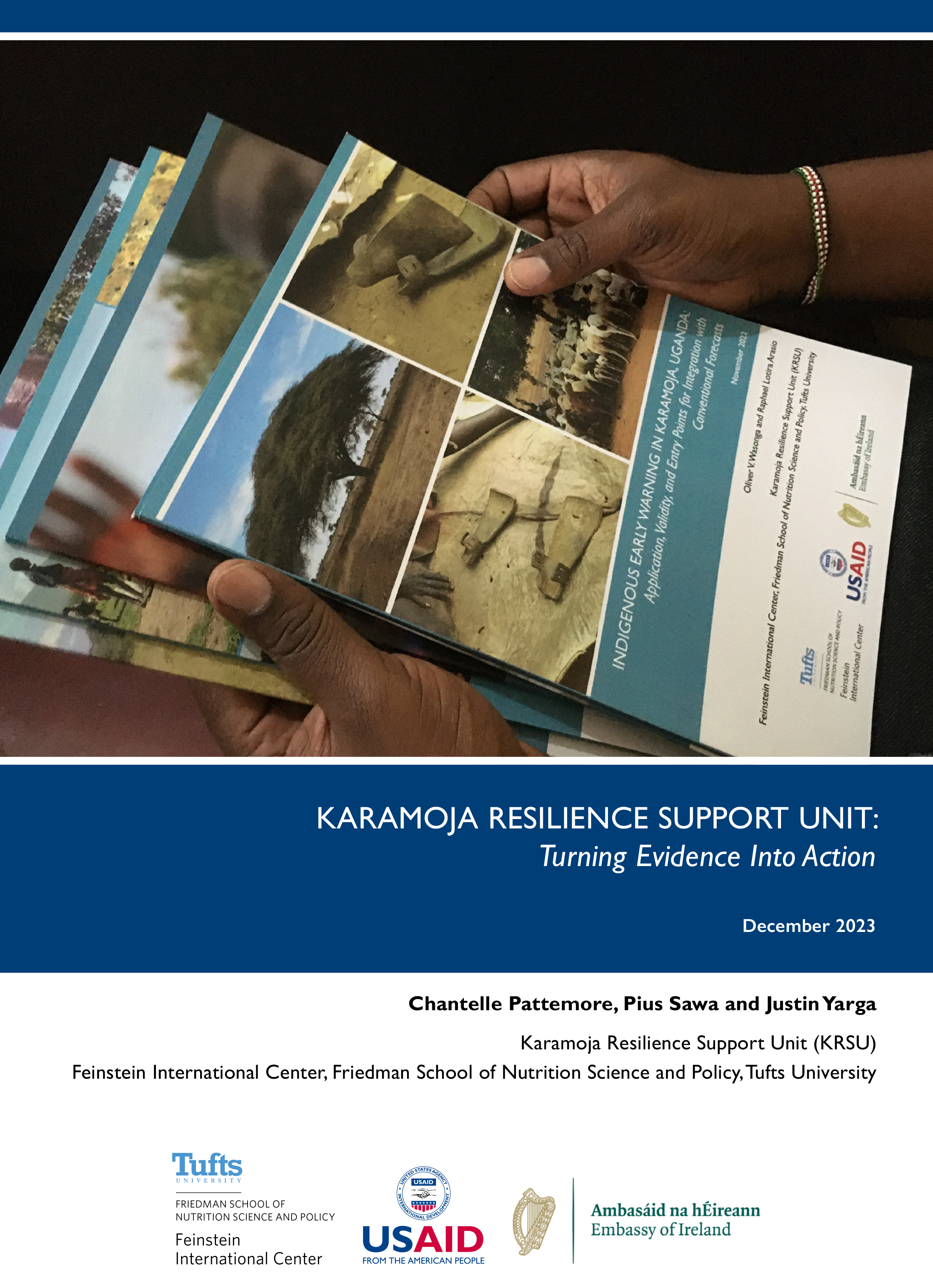
KARAMOJA RESILIENCE SUPPORT UNIT: Turning Evidence Into Action
To gauge understanding of how KRSU’s work benefits and is utilized in Karamoja, a rapid review was conducted in November and December 2023. The review involved face-to-face interviews with a number of the organization’s partners – including non-governmental organizations (NGOs), universities, academics, and donors.
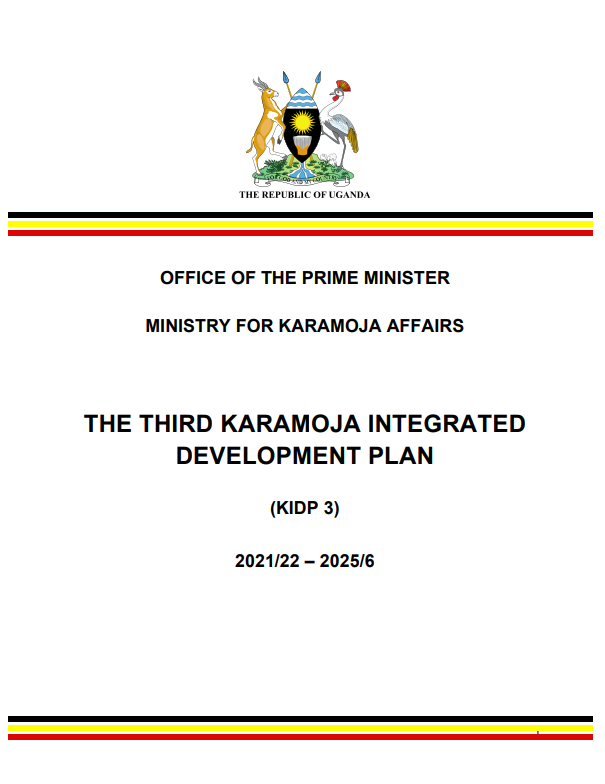
THE THIRD KARAMOJA INTEGRATED DEVELOPMENT PLAN
The third Karamoja Integrated Development Plan (hereafter KIDP3) covers the period 2021/22 to 2025/26. The design of the KIDP3 was preceded by a review of the performance of the KIDP2, both of which were commissioned by the Office of the Prime Minister (OPM) and Ministry for Karamoja Affairs (MfKA), and supported by the Karamoja Resilience Support Unit (KRSU) of Tufts University.
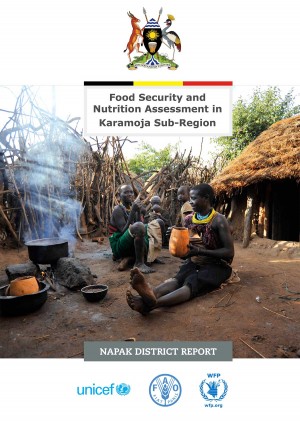
Food Security and Nutrition Assessment in Karamoja Sub-Region – Napak District Report
Napak is one of the districts in the Karamoja sub-region faced with chronic food insecurity coupled with high levels of malnutrition that are of public health concern.
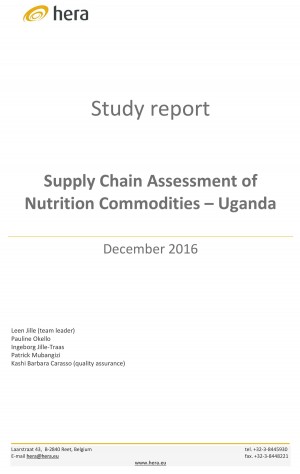
Supply Chain Assessment of Nutrition Commodities
The objectives of this study are to i) map the current (parallel) supply chains for nutrition commodities; ii) provide recommendations for a more harmonized, effective and efficient supply chain of nutrition commodities in Karamoja specifically; and iii) develop a national strategy for phased effective integration of nutrition commodities that have been managed separately from the mainstream supply chain.
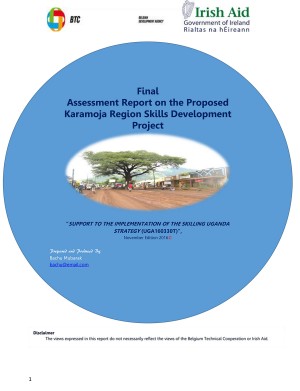
Final Assessment Report on the Proposed Karamoja Region Skills Development Project
The study aimed at exploring problems accelerating and limiting skills acquisition (BTVET Sector) for the youth in Karamoja region
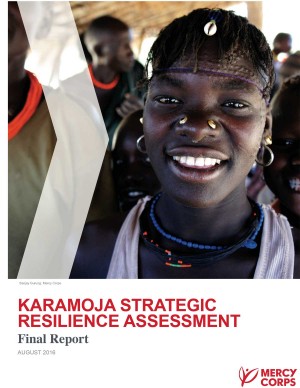
Karamoja Strategic Resilience Assessment
The Strategic Resilience Assessment demonstrates how individual, household, communities, governments and non-governmental actors can build resilience to shocks and stresses that threaten progress towards development goals.
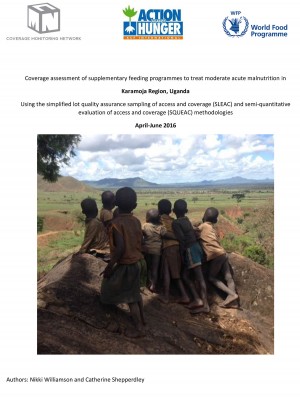
Coverage assessment of supplementary feeding programmes to treat moderate acute malnutrition in Karamoja Region, Uganda
In 2016, the World Food Programme (WFP) engaged ACF International to conduct an assessment of both supplementary feeding programme (SFP) for the treatment of moderate acute malnutrition (MAM) and the outpatient feeding programme (OTP) for the treatment of severe acute malnutrition (SAM).
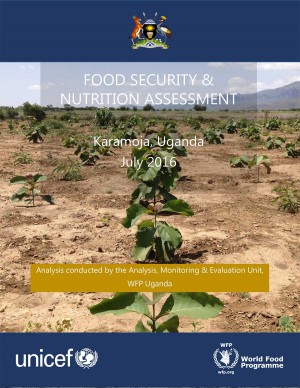
Food Security and Nutrition Assessment
Overall food security classification shows that half of the population in Karamoja (50%) is food insecure, of which 12% were found to be severely food insecure.
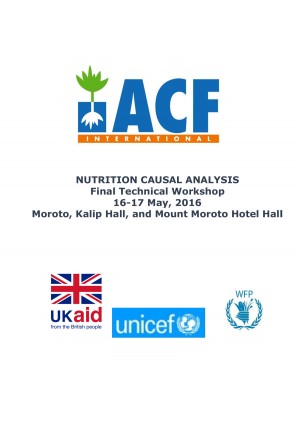
Nutrition Causal Analysis
The purpose is to go beyond generic interventions by identifying really context-specific causes in order to propose adequate solutions. The seasonality of under-nutrition can for example be very different from one livelihood zone to another. A Link NCA is not a statistical demonstration of nutrition causality that can be generalized at a national level.
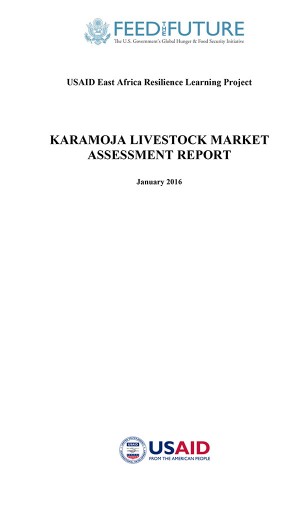
Karamoja Livestock Market Assessment Report
This report presents an analysis of livestock marketing in the Karamoja region of north-east Uganda. This assesment reviews the current status of livestock marketing and trade in Karamoja, including cross-border trade with Kenya and South Sudan. The assessment explains the economic logic of herd growth in Karamoja as a means to build household financial capital, and questions the notion of Karamojong herders as unresponsive to price and opportunity. The assessment reports a practice of 'trading up' in which bulls are fattened and exchanged for heifers, as well as a dynamic livestock market activity in Karamoja. Key constraints to livestock production are highlighted - weak veterinary services and problems with livestock water supply.
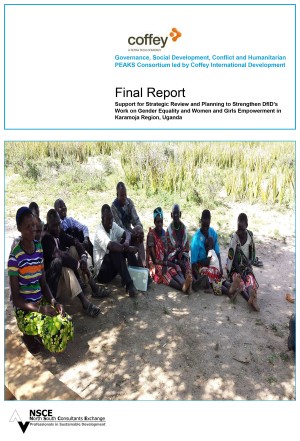
Final Report – Support for Strategic Review and Planning to Strengthen DfID’s Work on Gender Equality and Women and Girls Empowerment in Karamoja Region, Uganda
The purpose of the review is to strengthen gender equality and women’s and girl’s empowerment. DFID wishes to assess its work to date, in relation to the dynamic and changing social circumstances in the Karamoja, and in relation to inputs by other donors and organisations.
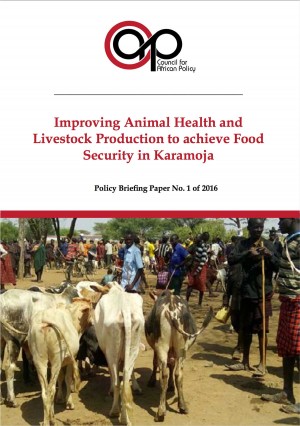
Improving Animal Health and Livestock Production to achieve Food Security in Karamoja
This policy brief is an opportunity to give a picture of the desirability of using livestock to improve livelihoods in the Karamoja region by taking advantage of existing policies or propose new ideas that will help exploit the potential of the livestock resource in Karamoja.
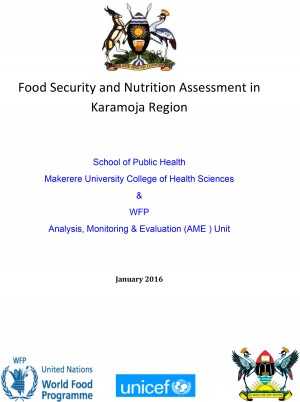
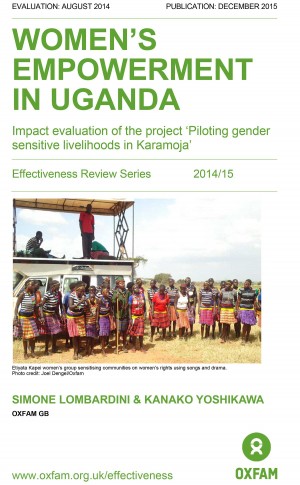
Women’s Empowerment in Uganda: impact evaluation of the project ‘Piloting gender sensitive livelihoods in Karamoja’
The Effectiveness Review took place in Kotido district, (Karamoja, Uganda) in August 2014, and set out to evaluate the impact of the project ‘Piloting gender sensitive livelihoods in Karamoja’ on dimensions of women’s empowerment in Karamoja. Project activities were implemented by Oxfam and partner organisations in the Kotido and Kaabong districts, Karamoja region, between July 2011 and March 2014.
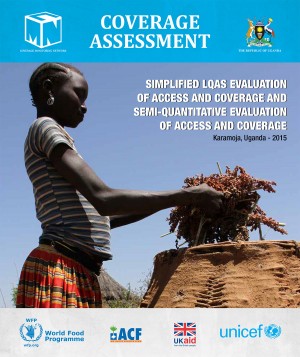
Coverage Assessment
Coverage assessments were conducted by ACF-UK in the Karamoja region from January to March 2015, in conjunction with UNICEF, WFP and MoH. The objectives of these assessments were: To map out point or period estimates of coverage of targeted areas; Identify boosters and barriers affecting coverage of OTC/SFP programs in the seven districts of the Karamoja region; In collaboration with key partners and the MoH, develop specific recommendations to improve acceptance and coverage of the program; Build capacity in MoH and key partners’ SLEAC/SQUEAC methodologies.
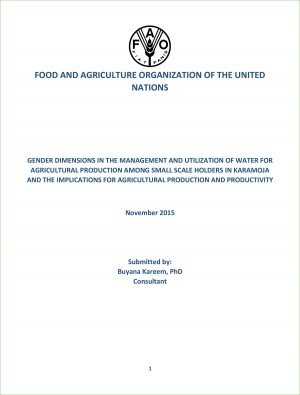
Gender Dimensions In The Management And Utilization Of Water For Agricultural Production Among Small Scale Holders In Karamoja And The Implications For Agricultural Production And Productivity
The report presents desk review findings on the gender dimensions of water for agricultural production, with a focus on Karamoja sub-region in northeastern Uganda, under four thematic areas: i) the gender dimensions of leadership and technical roles at community level; ii) gender considerations in construction, repair and mantainence of water facilities; iii) gender roles in the use of water for agricultural production and productivity; and iv) the implications for agricultural production and productivity. The report seeks to inform the implementation of FAO’s Gender Equality Policy (2013).
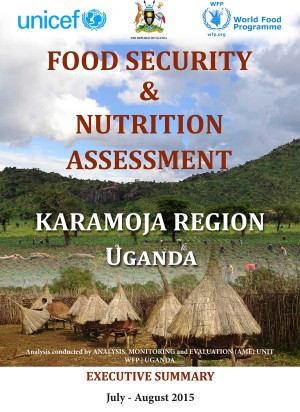
Food Security and Nutrition Assessment – Executive Summary
Food security and nutrition assessment for Karamoja region, July-August 2015
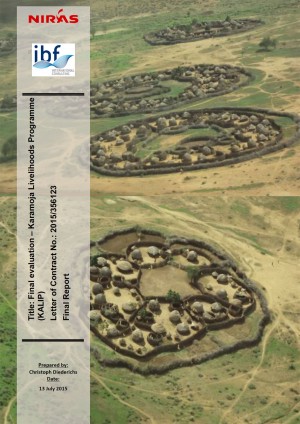
Final evaluation – Karamoja Livelihoods Programme
The Karamoja Livelihoods Programme (KALIP) was a 4-year programme (2010-2015) to protect and enhance incomes and food security of the agro-pastoral communities in Karamoja and support them in building up their productive asset base. The global objective of the final evaluation mission was: “to make an overall independent assessment about the past performance of KALIP, paying particularly attention to the impact of the actions against its objectives.” The overall objective of KALIP was: “to promote development as an incentive to peace in the region by supporting agro-pastoral production livelihood alternatives and income generation opportunities for the people of Karamoja.” The Supervising Authority for KALIP was the Office of the Prime Minister (OPM) and the donor was the European Union.
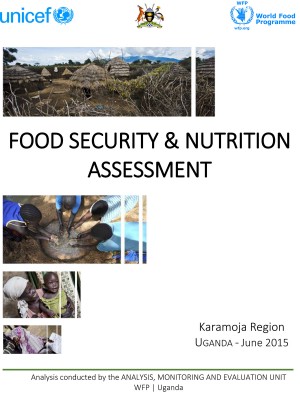
WFP and Unicef Karamoja Region Food Security and Nutrition Assessment – June 2015
Nearly half of households are currently food insecure with either borderline or poor Food Consumption Score, mainly due to the lean season that has seen a decline in food stocks at household level and contributed to food price rises (therefore reducing economic ability to purchase food). While food security status has marginally improved since June 2014, Global Acute Malnutrition (GAM) levels have deteriorated and are at highest levels since 2010
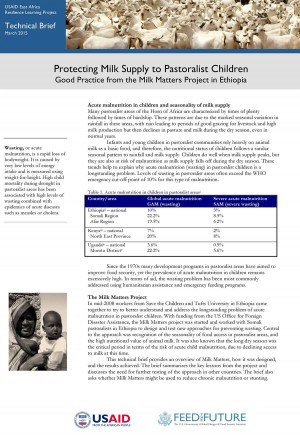
Protecting Milk Supply to Pastoralist Children: Good Practice from the Milk Matters Project in Ethiopia
This technical brief provides an overview of Milk Matters, how it was designed, and the results achieved. The brief summarizes the key lessons from the project and discusses the need for further testing of the approach in other countries. The brief also asks whether Milk Matters might be used to reduce chronic malnutrition or stunting. In mid-2008 workers from Save the Children and Tufts University in Ethiopia came together to try to better understand and address the longstanding problem of acute malnutrition in pastoralist children.With funding from the US Office for Foreign Disaster Assistance, the Milk Matters project was started and worked with Somali pastoralists in Ethiopia to design and test new approaches for preventing wasting. Central to the approach was recognition of the seasonality of food access in pastoralist areas, and the high nutritional value of animal milk. It was also known that the long dry season was the critical period in terms of the risk of acute child malnutrition, due to declining access to milk at this time.
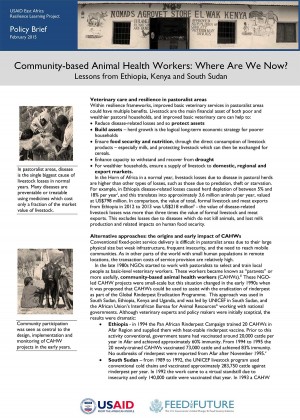
Community-based Animal Health Workers: Where Are We Now? Lessons from Ethiopia, Kenya, and South Sudan
A policy brief on evidence on community-based animal health workers in Ethiopia, Kenya, and South Sudan. At community-level, CAHWs are seen as valuable service providers and outperform other types of animal health care in most aspects of service provision. The main constraint is the supply of veterinary medicines in contexts of mixed policy support to veterinary privatization and limited government capacity to ensure the quality of imported or locally-manufactured medicines. In Kenya, these issues are compounded by a lack of policy or legislative support to CAHWs, combined with weak service provision by other providers in pastoralist areas
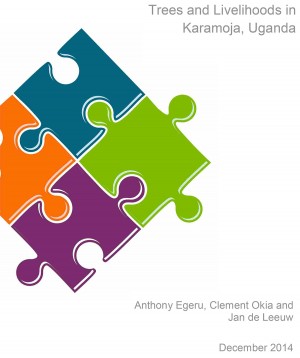
Trees and Livelihoods in Karamoja, Uganda
This report presents results of a rapid desk review of academic and grey literature on the evidence relating to trees and livelihoods in Karamoja a region in north eastern Uganda. The review identified the range of problems in the Karamoja sub-region; benefits of trees to people and communities living in Karamoja; the role of trees in resilience building; role of trees in agricultural production, traditional knowledge of trees in Karamoja; threats to trees, drivers of development in Karamoja; tree-based initiatives in the sub-region; and opportunities for action research in Karamoja.
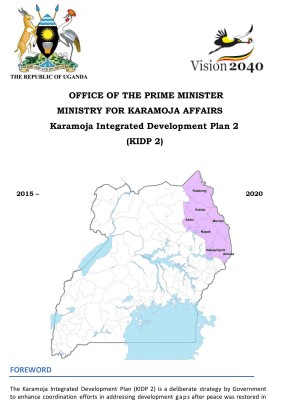
The Karamoja Integrated Development Plan II
The Karamoja Integrated Development Plan is a strategy and framework to enhance coordination efforts in addressing development gaps in the Karamoja region
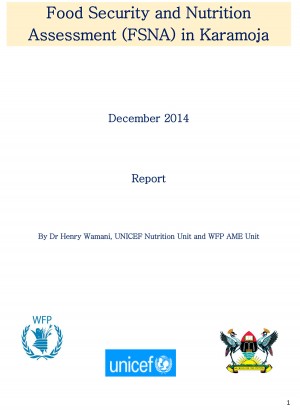
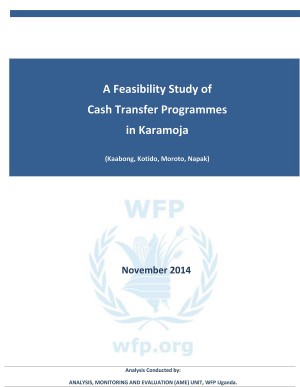
A Feasibility Study of Cash Transfer Programmes in Karamoja
The assessment reached over 1,100 households and primarily sought to assess the food security status of WFP beneficiaries and key aspects of market functionality with the view to inform potential cash/voucher programming in Karamoja.
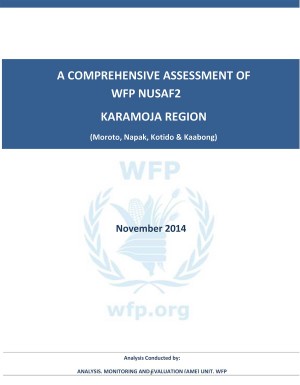
A Comprehensive Assessment of WFP NUSAF2 Karamoja Region
The key objective of the assessment was a follow-up to the NUSAF2 assessment of 2013 in order to monitor outcomes on an annual basis
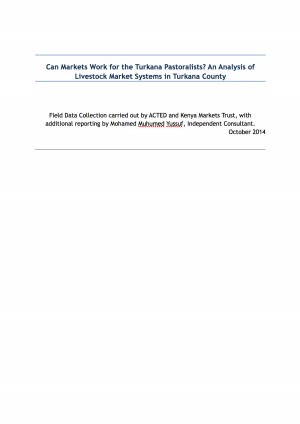
Can Markets Work for the Turkana Pastoralists? An Analysis of Livestock Market Systems in Turkana County
The following assessment was carried out in order to provide a contextual analysis of the livestock market systems in Turkana County. This analysis aims to contribute to an understanding of the wider context of pastoralist livestock systems that will fit into MAP͛'s existing livestock strategy.
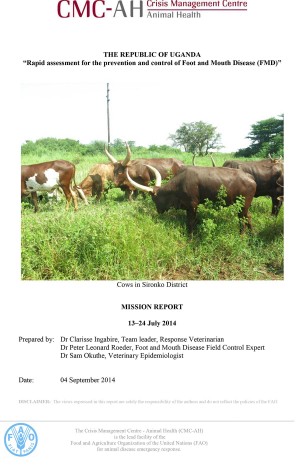
Rapid assessment for the prevention and control of Foot and Mouth Disease (FMD)
Assist the Veterinary Services of Uganda to assess FMD, and suggest enhancements to prevent further spread; examine and advise on strategic interventions to be implemented, and future coordination; develop a detailed short and medium term action plan for resource mobilization at national and regional levels.
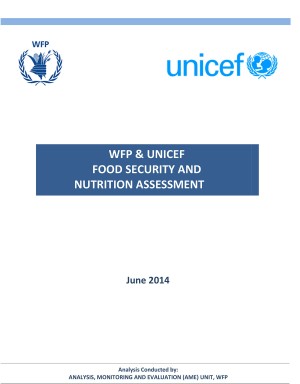
WFP and Unicef Food Security and Nutrition Assessment – June 2014
Food security and nutrition assessment for the Karamoja region.
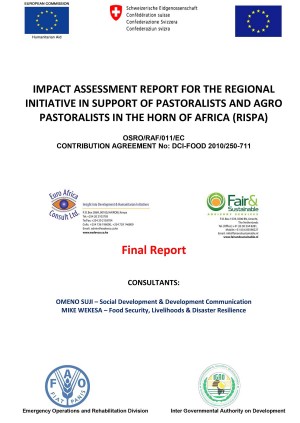
Impact Assessment Report for the Regional Initiative in Support of Pastoralists and Agro Pastoralists in the Horn of Africa (RISPA)
The report presents the relevance of the RISPA project to pastoral and agro-pastoral livelihoods in the HoA; its implementation performance; effectiveness in achieving expected results; efficiency; cross-cutting issues; impact; key issues/lessons learned from implementation and makes recommendations to be considered in future. The Project supported community action plans, government coordination structures and regional policies/ institutions in support of pastoral livelihoods in order to strengthen the resilience of agro-pastoral and pastoral communities and to diversify their livelihoods strategies and options.
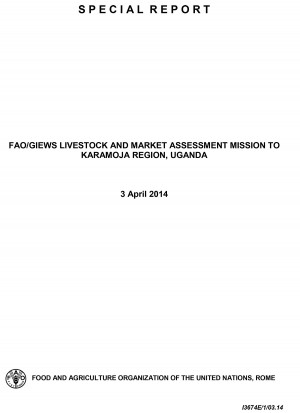
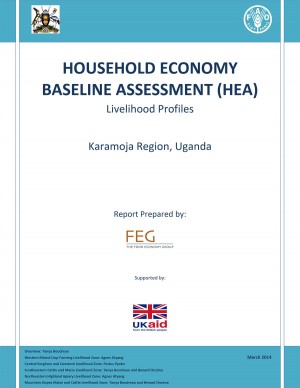
Household Economy Baseline Assessment (HEA)
This assessment was conducted in order to provide a solid base of livelihoods-related evidence to inform a 27-month (October 2013 – December 2015) FAO-implemented project in Karamoja sub-region titled “Strengthening Adaptive Capacity of Agro-Pastoral communities and the Local Government to Reduce Impacts of Climate Risk on Livelihoods in Karamoja, Uganda.
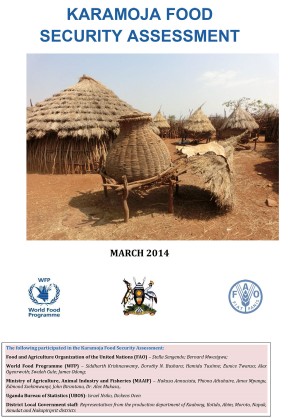
Karamoja Food Security Assessment
February 2014 assessment of food security for the region. The main causes of current household food insecurity in Karamoja can be attributed to a combination of reduced access to food and insufficient food production (availability) across the region.
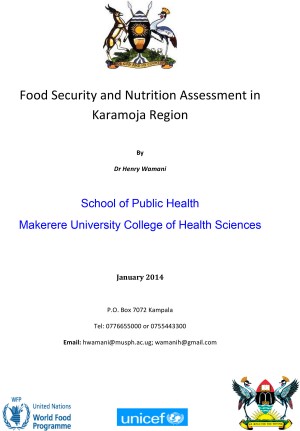
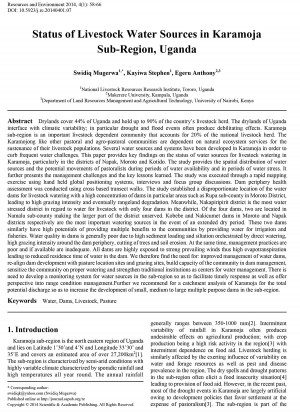
Status of Livestock Water Sources in Karamoja Sub-Region, Uganda
This paper provides key findings on the status of water sources for livestock watering in Karamoja, particularly in the districts of Napak, Moroto and Kotido.

Community Based Resilience Analysis (CoBRA) Assessment Report
The first comprehensive CoBRA assessment in Uganda was undertaken in the districts of Kotido and Kaabong, Karamoja sub-region on the 15th-26th July 2013. This assessment builds on the initial field trial of the draft CoBRA tool undertaken in Karamoja in late 2012. The multi-agency assessment was jointly led by the UNDP DDC and the Office of the Prime Minister (OPM). This report outlines findings of the Kotido/Kaabong CoBRA assessment. It also incorporates key feedback and consolidated inputs.

Nutrition Surveillance Data Analysis (December 2009-May 2012)
The nutrition surveillance system was implemented by conducting regular surveys (multi-stage cluster sampling methodology), three times a year at the same time of year (May, September and December), collecting data on key anthropometric, health, food security and livelihoods and WASH indicators. By May 2012, by the end the District Health Office with support ACF-USA had conducted eight rounds of nutrition surveillance surveys and reports shared with stakeholders. This report presents the results of the meta-analysis of the eight surveys combined, creating a sample of 17,696 children under 5 years of age and 13,973 households.
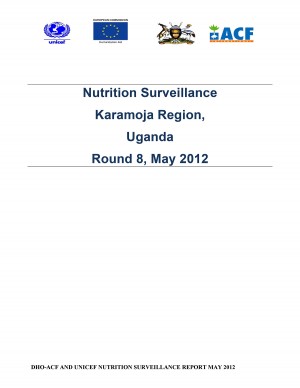
Nutrition Surveillance Data Analysis Karamoja, Uganda December 2009-May 2012
Between December 2009 and May 2012, the District Health Office with support from ACF-USA implemented a UNICEF-funded nutrition project to reduce child mortality through strengthening the capacity of the Ministry of Health in detection and treatment of acute malnutrition in Uganda. One of the expected results of this project was to have a functional nutrition surveillance system established and strengthened in six districts within Karamoja region (Kaabong, Abim, Kotido, Moroto/Napak, Nakapiripirit, and Amudat).
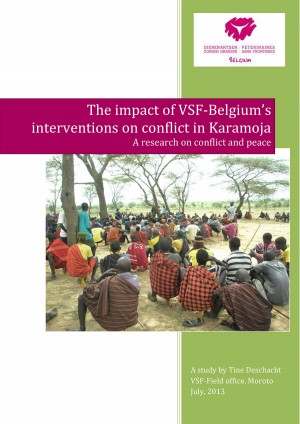
The impact of VSF-Belgium’s interventions on conflict in Karamoja: a research on conflict and peace
The objective of this study is to look at the impact of VSF-B's interventions on conflict in the Karamoja region.
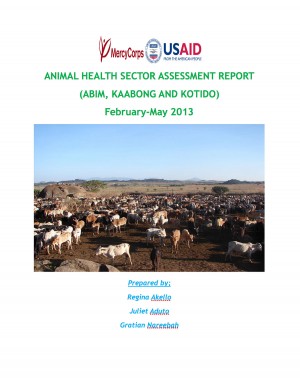
Animal Health Sector Assessment Report (Abim, Kaabong, and Kotido)
The Animal Health sector assessment was conducted by the team of 3 members; Gratian, Juliet and Regina in Abim, Kotido, Kaabong and outside Karamoja in Lira, Soroti and Mbale to understand the systemic functionality; major players, development actors, support functions, loopholes and challenges, actor/agency relations, drug supply chain as well as the formal and informal rules governing the sector.
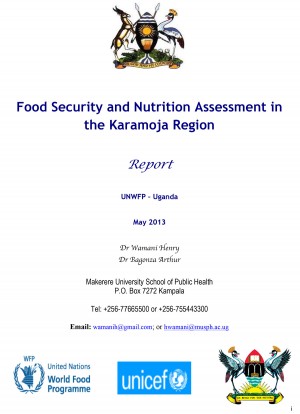
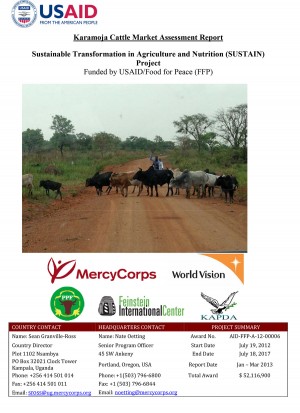
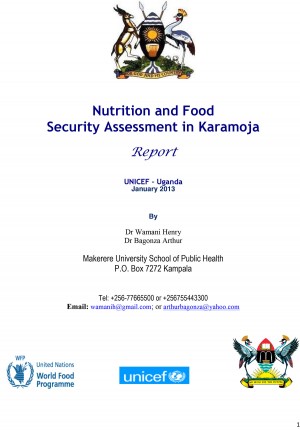
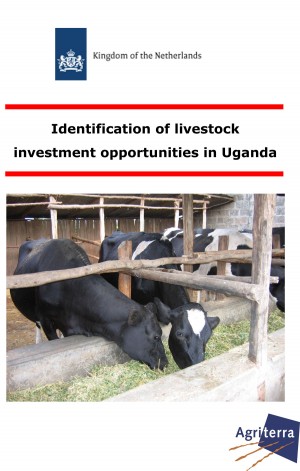
Identification of Livestock Investment Opportunities in Uganda
The purpose of this study is to identify investment opportunities in the livestock sector in Uganda. Undertaken with financial support by the Netherlands Embassy (EKN) in Uganda, the study support’s EKN’s policy of stimulating food security and economic diplomacy in Uganda.

Uganda Demographic and Health Survey 2011
The main objective of the 2011 UDHS was to obtain current statistical data on the Ugandan population’s demographic characteristics, family planning efforts, maternal mortality, and infant and child mortality. Another objective was to collect information on health care services and activities, antenatal, delivery, and postnatal care, children’s immunisations, and management of childhood diseases. In addition, the survey was designed to evaluate the nutritional status of mothers and children, to measure the prevalence of anaemia among women and children, to assess the level of knowledge about HIV and AIDS among men and women, and to determine the extent of interpersonal violence.
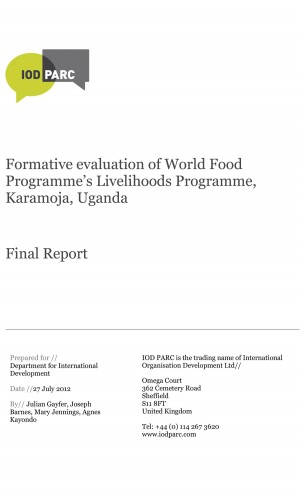
Formative evaluation of World Food Programme’s Livelihoods Programme, Karamoja, Uganda: Final Report
The purpose of this evaluation is to provide an independent assessment on the merit and worth of the World Food Programme’s (WFP) strategy on livelihoods recovery in Karamoja1. The object of the evaluation is the DFID funded WFP Livelihood Programme (2010 -2013); an element of the Government of Uganda (GoU) led second Northern Uganda Social Action Fund (NUSAF 2). This formative evaluation looks at the effectiveness, efficiency, relevance and the sustainability of the approaches that have been adopted by WFP and its partners.
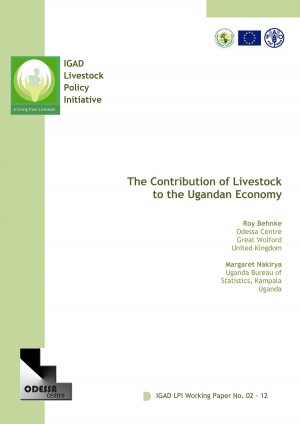
The Contribution of Livestock to the Ugandan Economy
This is the fifth in a series of reports on the contribution of livestock to the economies of the IGAD member states. Building on methodologies developed in earlier studies of the role of livestock in the economies of Ethiopia, Kenya and Sudan, the present report undertakes an assessment of the contribution of livestock to Uganda’s national economy.
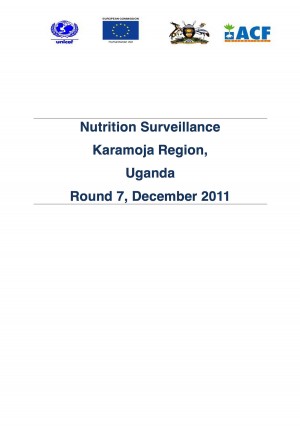
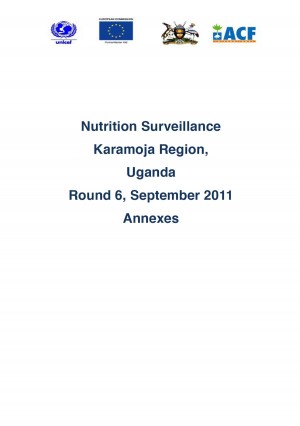
Nutrition Surveillance Karamoja Region, Uganda Round 6, September 2011 Annexes
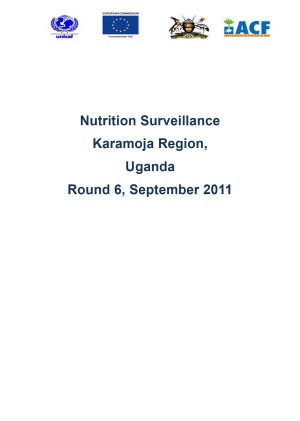
Nutrition Surveillance Karamoja Region, Uganda Round 6, September 2011
The sixth round of nutrition surveillance in Karamoja region was conducted through August/September 2011 in collaboration with District Health Offices (DHOs). Data were collected from 15-19/08/2011 in south Karamoja (Nakapiripirit, Amudat and Moroto/Napak) and from 31/08/2011-5/09/2011 in North Karamoja (Abim, Kaabong and Abim).